Uddalaka Aruni – Life and his search
(Philosopher- creation of Shri S Rajam)
15.1. As mentioned earlier, Uddalaka Aruni was a classic student, teacher and a philosopher of the Upanishad times. He is recognized among all the Upanishad sages and teachers as the true representative of the Upanishad age and its spirit of rational enquiry. He is reckoned among great of thinkers and real philosophers. Uddalaka Aruni was systematic and cogent in his approach; and, he put forward rational explanations on the nature of Man and the nature of Universe without employing the terms Brahman or God. He retained till the end, an open mind and a keen desire to learn. He remained a student all his life; yet, he was the best of the teachers.
15.2. In the philosophical texts, Uddalaka Aruni was perhaps the first to apply a form of experimental verification . His method of investigation was based in observation of facts (drstanta) and drawing inference by way of induction. Which, in other words, was reasoning and generalization based on observation. The process of his inference moves from the particular to the general, from species to the genus or from appearances to reality.
Outlook
16.1. According to Uddalaka, there is nothing that is unmixed in the material world. All matter is derived from three primordial elements (dhatus: fire, water and earth) combined in various proportions. Again, each of these elements has in it some traces of the other two. And, every material substance is composed of infinite number of extremely small particles (anu), so tightly packed they appear as a continuous whole leaving no scope for void. Each of these particles, according to him, is qualitatively different from the other; and is infinitely divisible. Each minute particle (anu) is in a churning motion within itself, by virtue of which it spontaneously unfolds or evolves; each according to its quality or nature.
The particles ceaselessly separate and recombine into newer forms.
16. 2. But, all matter composed of infinite number of minute particles is animated by one and the same pure and invisible energy (Sat). It pervades all parts of all living bodies as their living principle (jiva).Therefore, each living body or an organism is an animated whole, all parts of which being pervaded by one and the same living principle. That invisible power, the potent energy or vitality is present in the core of all beings, as in the womb of a tiny seed from which a huge banyan tree springs forth into existence. When that life-force leaves any part of the tree; say, a branch of the tree, then that branch withers away and ceases to an integral part of the living whole. And, when that life-force leaves the whole tree, then the tree withers and dies. But the living principle (jiva or atman) never dies.
16.3. Uddalaka conceives Sat, the origin of all things and all beings, not as an abstract concept but as real being; alive and capable of forming a wish. It appears to be a physical conception of the power of existence. It is absolute, pure and unmixed, indivisible, universal and un-manifested. When Sat entered into the three dominant elements in order to enliven them, it was not divided in the process; it remained the Absolute. There is nothing that does not come from Sat. Eventually, at the end; everything is absorbed back into That from which everything emerged. The process of going back is natural and automatic. It does not need a supernatural agency or the striving of the individual; and, it occurs in every case no matter whether one is aware of it or not.
[ He also rejected the ritualistic view that a certain thing is produced because a certain ritual is performed in a certain manner.]
16.4. Jiva or Atman is the living principle in individual beings, plants and matter; and it is identical in almost every respect with the universal spirit (Sat). It animates, in varying degrees, all kinds of matter. The various distinct objects, their varied natures as also their names and forms (nama-rupa) that one comes across in this world of conditional existence are conceptions of the mind and verbal identifications to enable one to distinguish one object from the other. But the proof of the existence of One subtle –force (Sat) which gives birth to and sustains all life is beyond the realm of subjective sense-cognition. It is possible understand That only through reasoning, grasped in faith.
[Here , Sat and the elements (dhatus) are, roughly, analogues to Purusha and Prakrti of the Samkhya. But, in Uddalaka’s hypothesis they work together and are entwined, unlike in Samkhya where they are ever separate.]
16.5. Following his observations and reasoning, Uddalaka tried to demonstrate the essential oneness of man and nature; that everything in the universe is made from the primeval matter, which in turn is enlivened by one and the same life-force. According to him, in the ultimate analysis, man is nothing but an evolution of That essence. His view was crisply captured in the epithet “That thou art, Svetaketu (Tat tvam asi)”.
16.6. Uddalaka did not involve a supernatural agency in the making of man or his world. He did not refer to God or any other Supernatural Being. According to him, the process of evolution, sustenance and eventual withdrawal into the source follows, at each stage, its own natural laws. Death according to him is a natural phenomenon where the body disintegrates into matter, water and heat. And, its living-principle (jiva) eventually resolves back into ‘Sat’ the primal source.
Early years
17.1. Uddalaka’s power of exposition shines forth in part six of the Chandogya Upanishad. He also figures in Kausitaki Upanishad (Kau.Up.1.1-2) and in Satapatha Brahmana (11. 4.1-9) where he is portrayed as a person of considerable wisdom and humility that is ever willing to learn from whosoever possessed knowledge he wished to acquire. Mahabharata briefly refers to an incident from his early student days, picturing him as an earnest pupil of Rishi Ayodah-Dhaumya (Mbh.1.3.638). This incident brings out Uddalaka’s dedication to work and absolute faith in his teacher’s commands.
17.2. Uddalaka son of Aruna Aupavesi of Gautama gotra, resident of Kuru-Panchala Desha, came from a long line of sage-scholars. His country, Panchala Desha, is identified as a region in Madhya Desha; the region south of the Himalayan foothills and the North of the Ganga in the present-day Uttar Pradesh. The Brihadaranyaka Upanishad (6.5.2-3) in its linage of teachers (vamsha-brahmana) lists fourteen generations of revered teachers and scholars of great merit. According to that rendering, Uddalaka Aruni was the son of Aruna Aupavesi Gautama who was the son or disciple of Upavesa. It is said; Upavesa followed Kushri the student of Vajasravas. Uddalaka’s immediate ancestors were scholars of great merit. His father Aruna is an important name even in Satapatha Brahmana, while Upavesha is mentioned in Brihadaranyaka Upanishad as a great Rishi.
yājñavalkya uddālakāt |uddālako ‘ruṇāt | aruṇa upaveśeḥ | upaveśiḥ kuśreḥ | kuśrir vājaśravasaḥ | vājaśravā jīhvāvato bādhyogāt | jīhvāvān bādhyogo ‘sitād vārṣagaṇāt | asito vārṣagaṇo haritāt kaśyapāt | haritaḥ kaśyapaḥ śilpāt kaśyapāt | śilpaḥ kaśyapaḥ kaśyapān naidhruveḥ | kaśyapo naidhruvir vācaḥ | vāg ambhiṇyāḥ | ambhiṇy ādityāt | ādityānīmāni śuklāni yajūṃṣi vājasaneyena yājñavalkyenākhyayante || BrhUp_6,5.3 ||
17.3. Aruni of Panchala, son of Aruna Aupavesi Gautama, had his early education under the famous teacher (upadhyaya) Ayoda-Dhaumya. Two of his class-mates mentioned are: Upamanyu and Veda (Mbh.1.3. Paushya Parva). Mahabharata narrates an interesting event which epitomizes Aruni’s sense of dedication and sincerity to work assigned to him.
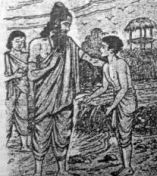 According to the story, on one rainy night the teacher Ayoda-Dhaumya asked Aruni to supervise water flowing through a certain field. When Aruni went there, he found the dyke had breached and the water was seeping out. Aruni tried to plug the breach and to stop the leak, but was not successful. Aruni then lay down on the breach; stopping the water flow with his body. He lay there the entire night. The next morning, the teacher Dhaumya along with other students came in search of Aruni; and found the boy stretched out along the dyke trying to stop the outflow of water. Dhaumya was deeply impressed with the dedication and sincerity of Aruni. On seeing his teacher, Aruni stood up. And, as he did so, the water began to flow out.
According to the story, on one rainy night the teacher Ayoda-Dhaumya asked Aruni to supervise water flowing through a certain field. When Aruni went there, he found the dyke had breached and the water was seeping out. Aruni tried to plug the breach and to stop the leak, but was not successful. Aruni then lay down on the breach; stopping the water flow with his body. He lay there the entire night. The next morning, the teacher Dhaumya along with other students came in search of Aruni; and found the boy stretched out along the dyke trying to stop the outflow of water. Dhaumya was deeply impressed with the dedication and sincerity of Aruni. On seeing his teacher, Aruni stood up. And, as he did so, the water began to flow out.
The teacher highly pleased with the pupil Aruni called him Uddalaka: ‘Because in getting up from the dyke you opened the water-course, henceforth you will be called Uddalaka as a mark of my favour. And because you obeyed my bidding so sincerely, you shall prosper and all the Vedas and other scriptures shall shine in you (Shloka 30-35).’ Later, Aruni gained great fame as Uddalaka Aruni.
yasmād bhavān kedārakhaṇḍam avadāryotthitas tasmād bhavān uddālaka eva nāmnā bhaviṣyatīti /sa upādhyāyenānugṛhītaḥ / yasmāt tvayā madvaco ‘nuṣṭhitaṃ tasmāc chreyo ‘vāpsyasīti / sarve ca te vedāḥ pratibhāsyanti sarvāṇi ca dharmaśāstrāṇīti / sa evam ukta upādhyāyeneṣṭaṃ deśaṃ jagāma //MB.01,003.030-31//
[This simple story was somehow turned into a symbolic myth where the rice-field represents human body; the leaking and uncontrolled water running away aimlessly as the mind; and Uddalaka who prevents wastage and brings water under control as the uttama-purusha who channelizes his intellect purposefully.]
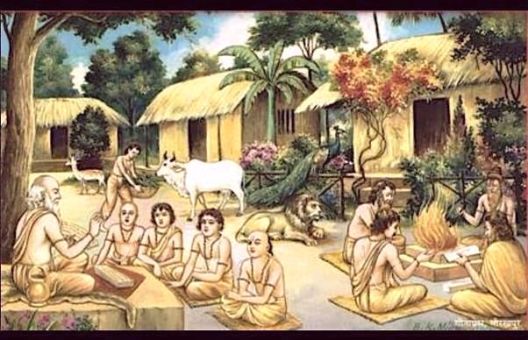
Learning
18.1. Apart from his initial ‘schooling’ at the Ashram of Dhaumya, Uddalaka Aruni studied under various other teachers reputed for their special knowledge on subjects that interested him. It appears, during those days, a student could, if he so desired, learn from another teacher while still being a student of one teacher. This he did with the permission of his teacher, usually at the end a term (samvatsara-vasin – Shata.Br. 14.1.1.26.27) –
samvatsara-vāsine’nubrūyāt eṣa vai samvatsaro ya eṣa tapatyeṣa u / pravargyastadetamevai-tat-prīṇāti tasmāt-samvatsara-vāsine’- nubrūyāt
Uddalaka travelled long distances across the breadth of Aryavarta from Gandhara – Madra region in the west to Videha in the east (Bh.Up.3.7.1; Ch.Up.5.3.6; 10.4).
athainam uddālaka āruṇiḥ papraccha — yājñavalkyeti hovāca | madreṣv avasāma patañcalasya kāpyasya gṛheṣu yajñam adhīyānāḥ | tasyāsīd bhāryā gandharvagṛhītā | BrhUp 3,7.1 |
It must have taken considerable courage and determination to trudge such long distances on foot when roads were almost non-existent and the modes of travel were poor, slow and painful.
18.2. A devoted student who travelled across the country in search of suitable teachers and knowledge was termed a naistika-brahmacharin or chaaraka. Sri Shankara explained the term chaaraka as referring to one who was constantly on move, as he had taken a vow to learn wherever the knowledge was available (adhyayanartha vrata – charana –chaarakah). The Taittereya Upanishad also refers to eager students wandering from place to place in search of knowledge “They hasten from all sides to famous teachers, like water down the hill” – yathā apaḥ pravatāyanti yathā māsā aharjaram (Tait. Up. 1.4.3). Uddalaka was a Charana or a Chaaraka in its true spirit.
19.1. Uddalaka basically hailed from Kuru- Panchala region (Sat.Brh.11. 4, 1, 2) – (roughly the present districts of Bareilly, Badaun and Farrukhabad), but sought his education under many teachers, in different parts of the country. For instance ; Uddalaka learnt about the principles and practice of Yajna from Panchala Kapya by travelling to Madra country (Sialkot area) – (Bh.Up.3.7.1).He learnt about transmigration of souls and about the path taken by the soul after departing from body from King Citra Gargyayana (his name is mentioned also as Citra Gargyayani or Gangyayani ) – (Kau.Up.1.1-2). Citra Gargyayana discoursed, in particular, on the question ‘who am I?’ and said “I am a season (ritu), born of the seasons, brought forth from the womb of endless space, and generated from the light, the luminous Brahman; I am tyam . I am that which you are. You are That ”. He described Brahman as the luminous primal energy. I am from – Brahman (Kau.Up.1.1.6).
ritur asmy artavo’asmy akasad yoneh sambhuto bharyayai retah samvatsarasya tejo bhutasya bhutasyatma bhutasya tvam atmasi yas tvam asi soham asmi tam aha ko’aham asmiti satyam iti bruyat kim tad yat satyam iti yad anyad devebhyas ca pranebhyas ca tat sad atha yad devas ca pranas ca tad tyam tad etaya vacabhivyahriyate satyam ity etavad idam sarvam idam sarvam asity evainam tad aha tad etac chlokenapyuktam.
19.2. Uddalaka Aruni is said to have studied for some time in the Gandhara* which formed a part of Uttarapatha, the northern region. In his later years, he mentioned Gandhara as a seat of learning; and compared a man who attains liberation to “a blind-folded person who reaches at last the country of Gandhara” (Ch.Up.4.14). The Satapatha Brahmana mentions; Uddalaka Aruni used to move about (dhavayam chakara) among the people of Uttarapatha, the northern country (Sat. Br. 11. 4. 1. 1).
(* It is explained that the Sindhu region represented the country of the lower Indus; while Gandhara included the sections of the middle Indus with its tributary the Kubha , the modern Kabul ; thus Gandhara , the North-west frontier region was the most ancient center of the Vedic tradition)
uddālako hāruṇiḥ udīcyānvṛto dhāvayāṃ cakāra tasya niṣka upāhita āsaitaddha sma vai tatpūrveṣāṃ vṛtānāṃ dhāvayatāmekadhanamupāhitam bhavatyupavalhāya bibhyatāṃ tānhodīcyānām brāhmaṇānbhīrviveda
The Buddhist text Uddalaka-Jataka (No.487) too mentions that Uddalaka journeyed to Takshashila (Taxsila to the north-west of Rawalpindi) and learnt there from a renowned teacher.
19.3. It is said; while moving about in the northern country, Uddalaka was impressed with the learning of the sage Saunaka (three Saunakas are mentioned with their ‘last’ names as: Kapeya, Svaidayana or Atidhanvan?), and immediately desired to become his pupil in order to study the ritual traditions, practices and interpretations (Ch.Up.1.9.3; 4.3.5-7). But, interestingly, in his own teachings in Chandogya Upanishad (ch.4) Uddalaka rejects those traditions and interpretations, and opts for more careful observations of nature carried further by experiments and reasoning. And, he attempts to find what causes the things to appear as they do, and to offer generalizations of a rational character.
19.4. Earlier, Uddalaka had learnt the Madhu-vidya (honey doctrine) from his father Aruna Aupavesi Gautama at Kuru-Panchala (Ch.3.11.4). Uddalaka is also said to have had contacts with Bhadrasena Ajatasatru Kasya, the king of Kasi and Janaka Videha, the king of Videha.
Later years
20.1. Uddalaka was a life-long student, never too old to learn. Even in his later years he learnt from Prince Pravahana Jaivali of Panchala the theory of karma and transmigration of souls, and about the path taken by the departed souls – devayana and pitriyana (Ch.Up.5.3.10; Brh.Up.6.2). Similarly, he learnt the doctrine of Vaisvanara –vidya from King Asvapathi kaikeya in the far off north-west region (Ch.Up.7.11).
20.2. How these came about is rather interesting. As regards the former, when his son Svetaketu unable to answer the questions posed by Pravahana Jaivali (such as: Do you know to what place men go after departing from here?; “Do you know how they return again?”; and “Do you know where the paths leading to the gods and leading to the Manes separate?” etc) returned home crest fallen and asked his father to teach him the right answers, Uddalaka admitted he too did not know the answer to many of those questions. And, he then said to his son ‘let’s both go to Jaivali and learn from him ’.
Similarly, on another occasion, five householders approached Uddalaka to teach them about Vaisvanara Atma. Uddalaka did not however know the subject very well; and said to himself, ‘these householders have come to question me of which I am not able to tell them completely; let me redirect them’. Uddalaka then suggested to them: “Revered Sirs, King Asvapati the son of Kekaya knows, at present, about the Vaisvanara Atma. Let us all go to him.” He then led those five to Asvapati, promptly (travelling all the way from central UP to north-west Punjab).
20.3. In the tradition of wandering scholars who went around the country engaging in disputes and discussions, Uddalaka too participated in debates held in the far off Gandhara and other northern regions (Sat.Brh.11.4.1) as also in court of King Janaka of Videha in the east (along the Indo – Nepal border region)- (Ch.Up.4.14).
uddālako hāruṇiḥ udīcyānvṛto dhāvayāṃ cakāra tasya niṣka upāhita āsaitaddha sma
vai tatpūrveṣāṃ vṛtānāṃ dhāvayatāmekadhanamupāhitam bhavatyupavalhāya
bibhyatāṃ tānhodīcyānām brāhmaṇānbhīrviveda-11.4.1.[1
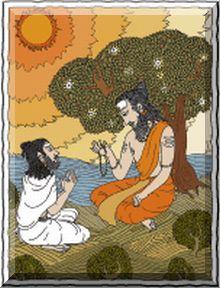
Teacher
21. 1. It is said; the great Yajnavalkya (Brh.Up.6.3.15) as also sage Kausitaki (Sat Brh.11.4.12) to whose family the portions of the Kausitaki Brahmana are attributed, Proti Kausurubindi of Kausambi (Sat Brh. 12.2.213), and Sumna-yu (Sahkhayana Aranyaka -15.1) were at onetime the students of Uddalaka Aruni.
atha vaṃśaḥ | oṃ namo brahmaṇe nama ācāryebhyaḥ | guṇākhyāc chāṅkhāyanād asmābhir adhītam | guṇākhyaś śāṅkhāyanaḥ kahoḷāt kauṣītakeḥ | kahoḷaḥ kauṣītakir uddālakād āruṇeḥ | uddālaka āruṇiḥ priyavratāt saumāpeḥ | priyavrataḥ saumāpiḥ somapāt | somapaḥ saumāt prātiveśyāt | saumaḥ prātiveśyaḥ prativeśyāt | prativeśyo bṛhaddivāt | bṛhaddivaḥ sumnayoḥ | sumnayur uddālakāt | uddālako viśvamanasaḥ | viśvamanā vyaśvāt | vyaśvaḥ sākamaśvāt | sākamaśvo devarātāt | devarāto viśvāmitrāt | viśvāmitra indrāt | indraḥ prajāpateḥ | prajāpatir brahmaṇaḥ | brahmā svayaṃbhūḥ | namo brahmaṇe namo brahmaṇe ||ŚĀ 15,1
But his fame as a teacher and philosopher rests mainly on the discourses he imparted to his son Svetaketu (formally: Svetaketu Auddalaki Gautama). It contains the essential teaching of all the Upanishads.
21.2. In the Chandogya Upanishad, Uddalaka is portrayed as a caring father who sent his son, at his age of twelve, to a residential school. And, on his return home, after twelve years of education, Uddalaka questions Svetaketu, now a bright looking well grown young man, to find whether he had learned anything of importance. Of course, he had not. Uddalaka then proceeds to teach his son, with great diligence, on what the school could not instruct: ‘knowing which everything becomes know’ – the real meaning of life.
21.3 Let’s talk of Uddalaka’s teachings in the next part.
Continued in Part Three
Sources and References
Life in the Upanishads by Dr. Shubhra Sharma; Abhinav Publications, 1985
The History of Pre-Bhuddhistic Indian Philosophy by Dr .Benimadhab Barua; Motilal Banarsidass, 1921
The Upanishads by Ekanath Easwaran and Michael N Nagler; Nilgiri Press, 2007.
A Course in Indian Philosophy by AK Warder, Motilal Banarsidass, 2009
Indian Philosophy before the Greeks by David J Melling
Atman in pre-upanisadic Vedic literature By H G. Narahari; published by Adyar Library 1944.
http://www.archive.org/details/atmaninpreupanis032070mbp
http://www.rationalvedanta.net/node/126
What the Upanishads teach
http://www.suhotraswami.net/library/What_the_Upanisads_Teach.pdf
The Chandogya Upanishad by Swami Krishnananada
http://www.suhotraswami.net/library/What_the_Upanisads_Teach.pdf
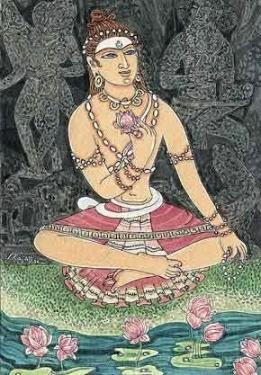
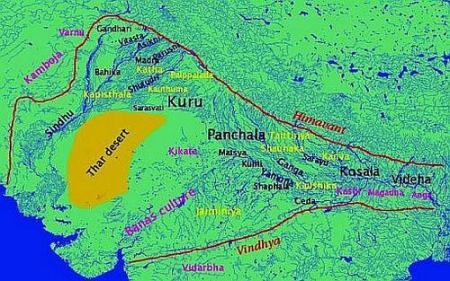
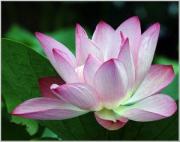
sreenivasaraos
June 2, 2016 at 5:51 am
Thanks
sreenivasaraos
March 18, 2015 at 7:17 am
Dear Sri Rao
I was constantly reminded of Adi Sankara when I read about the life of Uddalaka Aruni .Like Uddakala Sankara never rested till the end and in the short life of 32 years he could travel in those days all over India and establish matt too.
Uddalaka’s travels to seek truth and knowledge is so well narrated.Hope to see the next part
Thank you Mr Rao for your painstaking efforts .
Regards
Sivaram
sreenivasaraos
March 18, 2015 at 7:18 am
Dear Shri Sivaram, Welcome and Thank you .Yes, as you remarked, Sri Sankara in his brief span of life was both a keen learner and an excellent teacher; A rare genius who could learn intuitively and teach precisely. In the next part lets talk exclusively about the hypothesis and concepts put forward by Uddalaka Aruni.Please do read.
Regards
sreenivasaraos
March 18, 2015 at 7:17 am
I suppose, this method of learning sharply distinct from formal training scores better in the sense it allows the student to find his own path, lead by his curiosity to know a subject. such intense search to know and learn more did bring finally comprehensive Upnishads. Today they have a lot to tell us about this life and beyond.
The rational and logic of life and existence adds to authenticity which may be missing in blind faith.
Enjoyed reading it.
madhvi
sreenivasaraos
March 18, 2015 at 7:18 am
Dear Dr.Madhavi, Welcome and Thank you. Yes, you might be right. Training, basically, is following rules and instructions, while education is unfolding. It is necessary that every child is taught, as it is also necessary that every child be sparked with a desire to learn. In the ancient context, a student studied under a teacher but had the freedom to seek knowledge from elsewhere, provided he had the willingness to learn. Another was that such pursuits were not driven by economic necessities to earn a living and to further a career.
The mechanics of Living In the present-day may not always allow such freedom of choices, at all stages. In most cases, now, one is ‘trained’ up to a stage; and then allowed to ‘educate’, if he so wishes. It is up to each one to furrow her/his path. I honestly do not know which the ideal way to live and to learn is. I am not sure if anyone has it with precession. Perhaps, everything is context-sensitive.
Thank you for a thoughtful observation. Please keep talking.
Regards
sreenivasaraos
March 18, 2015 at 7:17 am
hank you very much for this blog. The Seeker never ceases seeking and the learner is ever incomplete in knowledge. One can only stand and look with admiration. Many of the teachers these days never admit that they don’t know !! What a great Sage He was !!
I was also fascinated by the paragraph OUTLOOK. 16.1 and 16.2
This is what the Sidhdha talked about or demonstrated !!
Disintegrate things. Recombine things from air and create things..There is no magic in this. It is just the power of the MIND to make this happen !!
Usha
sreenivasaraos
March 18, 2015 at 7:19 am
Dear Ushasuryamani, Yes maa, you are absolutely right. A true learning demands both dedication and humility; never satiated .Just as an artist, no seeker is fully pleased. ‘There is no satisfaction whatever, at any time. There is only a queer dissatisfaction, a blessed unrest that keeps us marching and makes us more alive’.
The other observation you made too is valid. Perhaps certain concepts that relate matter and energy spring for a common pool of wisdom. We may discuss similar other notions in the next part. And also about Uddalalak’s hypothesis on how the food and drinks we consume is processed and segregated into gross, median and subtle essences; and how each degree of fineness is absorbed into the body; and how the mind and its functions are dependent on the nutrition.
I respect your perception and understanding. Warm Regards
sreenivasaraos
March 18, 2015 at 7:19 am
your efforts in writing in such great people, personalities and the great heritage of India is really really commendable, pls pls do keep it up,
we are waiting for more and more – but fisrt part 3/3
best wishes,kk
sreenivasaraos
March 18, 2015 at 7:20 am
Dear Sreechandra, I am glad you read. Yes, I shall soon post the Part Three; it is a bit thick. Sorry, I was away in the Thanksgiving weekend, and could not edit it. Please do read later . Cheers and Warm Regards
George
June 2, 2016 at 5:20 am
I see interesting posts here. Your site can go viral easily, i
know sneaky way to get massive traffic from social websites.
For more info search google for: fejlando’s tips
sreenivasaraos
June 2, 2016 at 5:52 am
Thanks
Sunita Dwivedi
October 24, 2021 at 3:00 pm
Excellent article by Sreenivasa Rao. Thanks Sir. Please allow me to quote from your blog.
Sunita Dwivedi
sreenivasaraos
October 24, 2021 at 11:24 pm
Dear Sunita
Thank you for the visit; and, for the appreciation
Yes Maa. You may please do
please also read the other two parts of the article
And the ones on Mahidasa at
Cheers and Regards